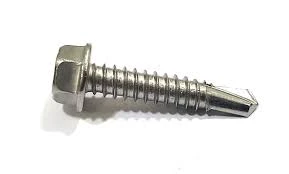nails for insulation
Nails for Insulation Enhancing Energy Efficiency in Construction
Nails are typically considered a basic component of construction, serving primarily to join materials together. However, in the realm of insulation, nails play a critical role that is often overlooked. When it comes to enhancing the energy efficiency of buildings, the use of appropriate nails for insulation systems can make a significant difference in performance, longevity, and stability.
Insulation materials, such as foam board, fiberglass, and mineral wool, serve the primary function of reducing heat transfer between the interior and exterior of buildings. These materials are essential for controlling indoor temperatures, reducing energy consumption, and ultimately leading to lower utility bills. However, to ensure that insulation performs optimally, it must be installed correctly, and this is where nails come into play.
Types of Nails for Insulation
When selecting nails for insulation purposes, several factors should be considered, including material compatibility, corrosion resistance, and the specific insulation type being used
. Common types of nails employed in insulation applications include1. Insulation Fasteners Designed specifically for securing insulation materials, these fasteners usually feature a large head and are often made of materials resistant to corrosion, such as galvanized steel or stainless steel. They hold the insulation in place effectively, ensuring that there are no gaps that could lead to thermal bridging.
2. Roofing Nails These nails are vital in securing insulation on roofing systems. They are typically large and have a wide head, providing a stable base. The longevity of roofing nails is crucial since they are exposed to varying weather conditions, making corrosion-resistant options necessary.
3. Plastic Nail Spikes For applications where traditional metal nails might not be suitable—like in certain types of insulation boards—plastic nail spikes can be a great alternative. These spikes are lightweight and resistant to moisture, making them perfect for areas prone to dampness.
nails for insulation

Installation Considerations
When installing insulation with nails, it is essential to follow proper techniques to ensure effectiveness and durability. Here are some key guidelines for installation
- Spacing and Placement The spacing of the nails is crucial. Too few nails can lead to sagging insulation, while too many can result in thermal bridging. A general rule of thumb is to use nails every 12 to 16 inches, but this can vary depending on the insulation’s type and thickness.
- Avoid Over-Driven Nails When nails are driven too deep into the insulation, they can compress the material, reducing its effectiveness. It’s important to ensure that nails are driven in just enough to secure the insulation without damaging its structure.
- Compatibility with Materials Ensure that the nails used are compatible with the insulation materials. For instance, using steel nails with foam insulation can lead to moisture buildup, which can compromise the integrity of both the nail and the insulation over time.
Conclusion
Incorporating the right nails for insulation into construction projects may seem like a minor detail, but it contributes significantly to the overall energy efficiency and durability of buildings. By understanding the types of nails available and the best practices for installation, builders and homeowners can enhance the performance of their insulation systems, resulting in a more comfortable living environment and lower energy costs. In the pursuit of sustainable and efficient construction practices, even the smallest components, such as nails, can have a profound impact on energy conservation efforts.
-
Weatherproof Plastic Expansion Anchors for OutdoorNewsJun.06,2025
-
Sustainability in the Supply Chain: Eco-Friendly TEK Screws ProductionNewsJun.06,2025
-
Load-Bearing Capacity of External Insulation FixingsNewsJun.06,2025
-
Double Head Bolts: Enhancing Efficiency in Industrial MachineryNewsJun.06,2025
-
Corrosion Resistance in Chipboard Screws: Coatings for Wholesale DurabilityNewsJun.06,2025
-
Butterfly Toggle Bolts : Enhancing Structural ResilienceNewsJun.06,2025
